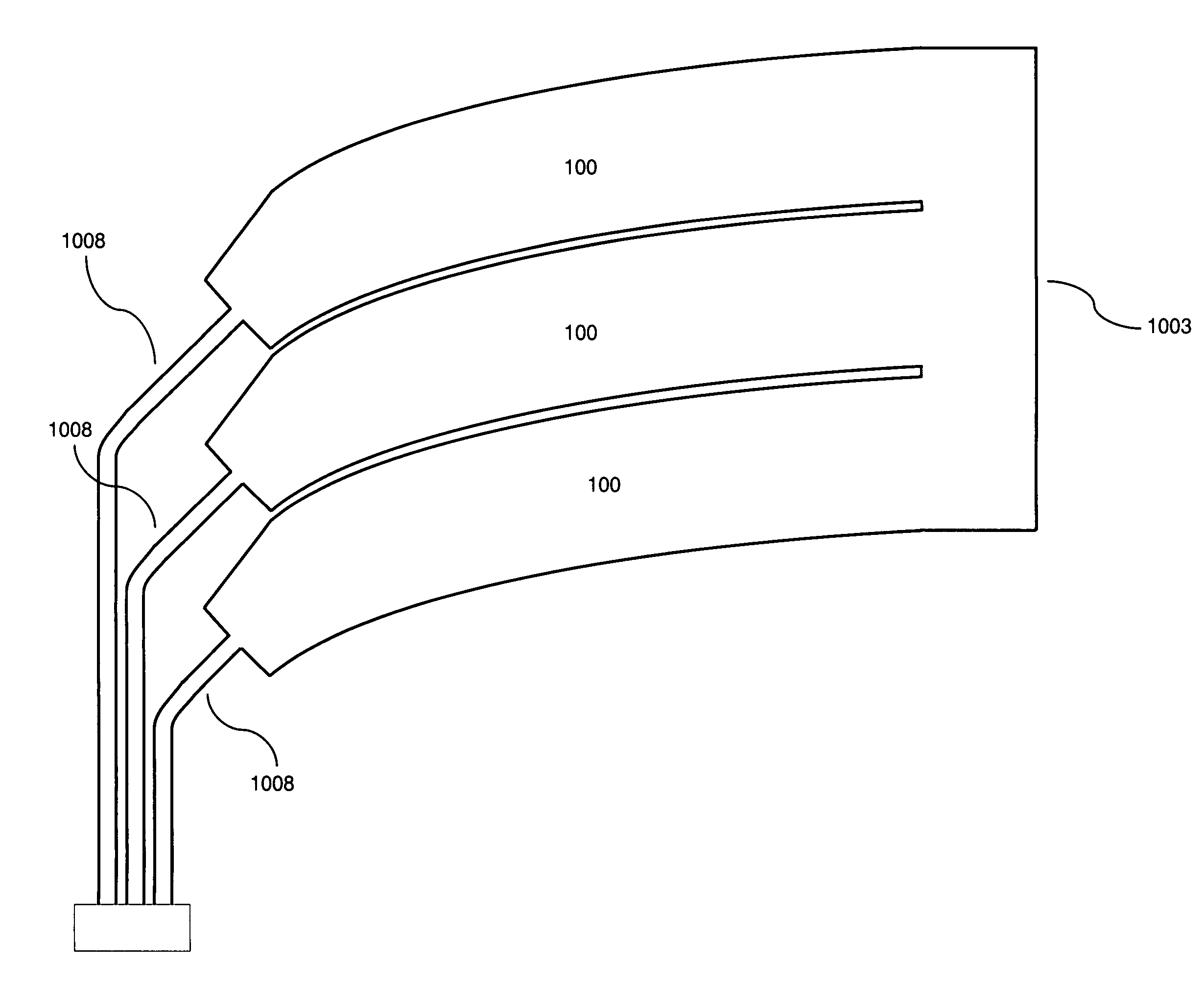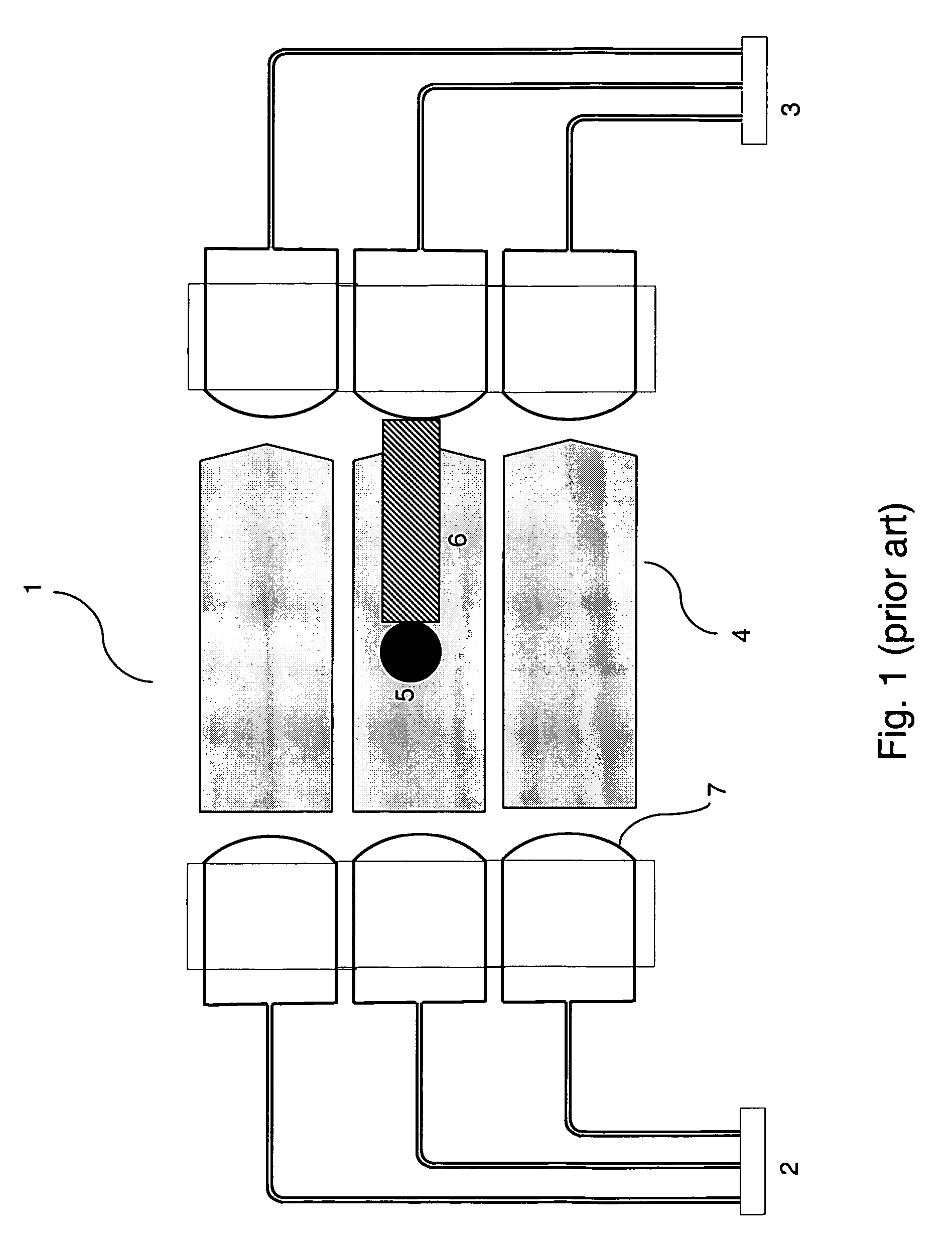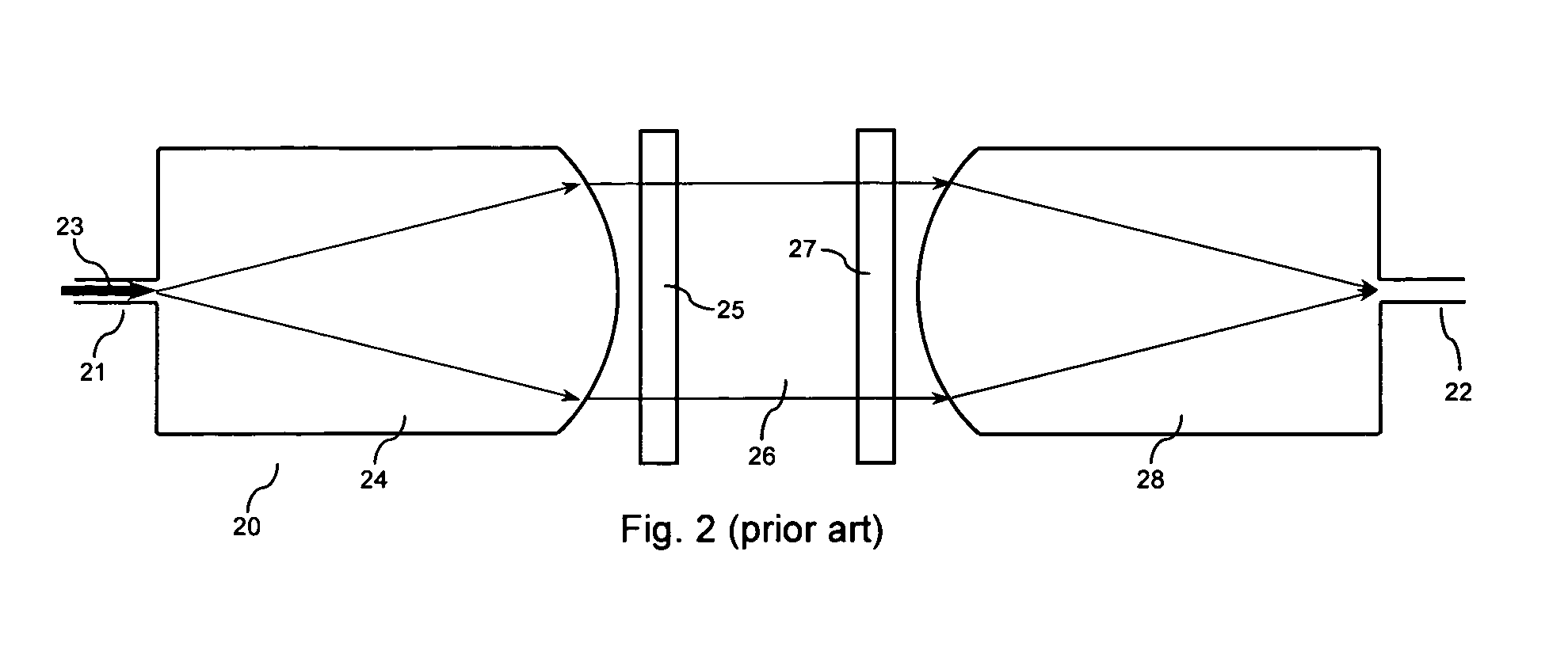Waveguide design incorporating reflective optics
a waveguide and optics technology, applied in waveguides, optical elements, instruments, etc., can solve the problems of large dn/dt, difficult positioning of the receive side waveguide, and complicated manufacturing process of the discrete beam cas
- Summary
- Abstract
- Description
- Claims
- Application Information
AI Technical Summary
Benefits of technology
Problems solved by technology
Method used
Image
Examples
example 1
[0115]This example is designed to illustrate the temperature sensitivity of a paired set of prior art transmit and receive lenses that form part of an optical touch screen sensor. FIG. 5 shows transmit lens 50 and receive lens 51, each composed of polymer A and being mirror images of each other. In this example the lenses are assumed to be perfectly aligned in the horizontal plane, ie. that they share an optical axis 52. The width of the touch screen, ie. the tip-to-tip separation 53 of the lenses, is 65 mm, and the cylindrical lenses that collimate the beams in the vertical (out of page) dimension have been omitted for clarity. Waveguides 54 and 55 entering the ends of lenses 50 and 51 at points 502 and 503 are both 8 μm wide and aligned with the axis of symmetry of the respective lens. Each lens 50, 51 has a straight section 56 of length 1460 μm and width 57 of 750 μm, and ends in a curved surface 58, 501 that is an arc of a circle with radius of curvature 570 μm. Ideally, light 5...
example 2
[0131]In accordance with the invention, a transmit element 100 incorporating a parabolic reflector is shown in FIG. 10. Transmit waveguide 102 guides light 101 through an angle β=33.1° at bend 1007, along straight section 1008 and into polymer slab region 103 at point 104, whereupon it spreads with divergence angle 2φ and encounters curved side 106 that is a portion of a parabola with focus at point 104 and with directrix perpendicular to optical axis 105. The angle of incidence θi ranges from 63° at point 107 to 68° at point 108, and is always greater than the critical angle (see Table 4) so that the total internal reflection condition is satisfied. After reflecting off curved side 106, the light is collimated along optical axis 105. Straight sides 109, 1000 and 1001 of polymer slab region 103 are 204 μm, 687 μm and 220 μm long, and curved sides 1002 and 106 are both 3493 μm long. After reflection off curved side 106, the light is collimated into parallel rays 1009 that exit transm...
example 3
[0136]A transmit element 150 incorporating an elliptical reflector and designed for a 65 mm wide touch screen is shown in FIG. 15. Transmit waveguide 152 guides light 151 through an angle β=33.1° at bend 1507, along straight section 1508 and into polymer slab region 153 at point 154, whereupon it spreads with divergence angle 2φ and encounters curved side 156 that is a segment of an ellipse with one focus at point 154 and the other focus at point 1504 located a distance 32.5 mm from end face 1503. The angle of incidence θi ranges from 63° at point 157 to 68° at point 158, and is always greater than the critical angle (see Table 4) so that the total internal reflection condition is satisfied. Straight sides 159, 1500 and 1501 of polymer slab region 153 are 204 μm, 687 μm and 220 μm long, and curved sides 1502 and 156 are both 3493 μm long. After reflection off curved side 156, the light is focused into a beam 1509 that exits transmit element 150 at end face 1503 and converges to poin...
PUM
 Login to View More
Login to View More Abstract
Description
Claims
Application Information
 Login to View More
Login to View More - R&D
- Intellectual Property
- Life Sciences
- Materials
- Tech Scout
- Unparalleled Data Quality
- Higher Quality Content
- 60% Fewer Hallucinations
Browse by: Latest US Patents, China's latest patents, Technical Efficacy Thesaurus, Application Domain, Technology Topic, Popular Technical Reports.
© 2025 PatSnap. All rights reserved.Legal|Privacy policy|Modern Slavery Act Transparency Statement|Sitemap|About US| Contact US: help@patsnap.com



